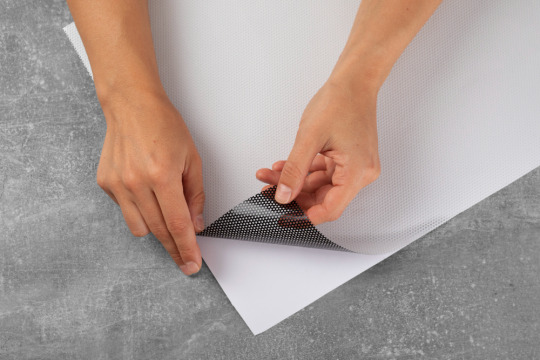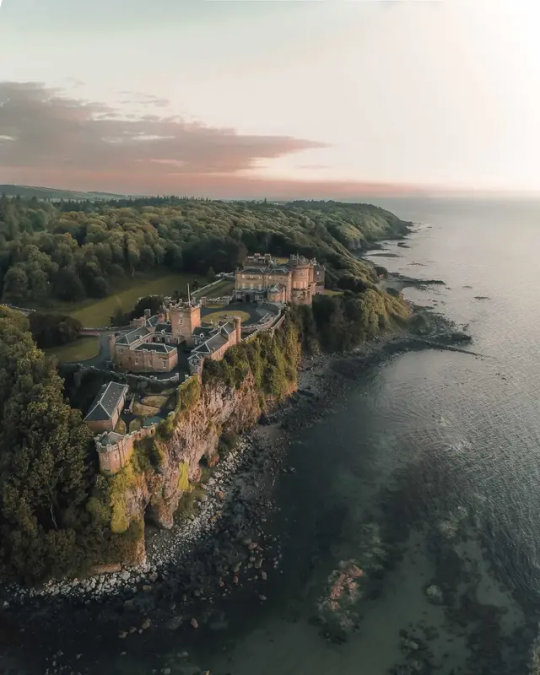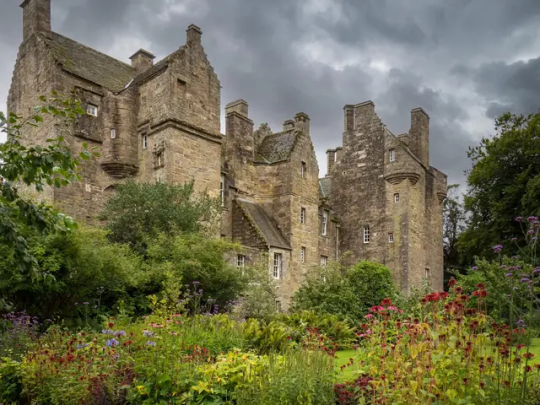#South Ayrshire
Explore tagged Tumblr posts
Text
Preparing for the Upcoming Storm: Strong Winds Expected Across the UK
The Met Office has issued warnings for these regions, urging residents to take precautions and stay informed.
This Sunday and into Monday, the UK is set to experience a spell of strong winds, with certain areas likely facing disruption. While the windy period will impact the entire country, parts of Scotland, Northern Ireland, Northwest England, and North West Wales may be particularly affected. The Met Office has issued warnings for these regions, urging residents to take precautions and stay…
#Argyll and Bute#East Ayrshire#East Ayrshire East Renfrewshire Inverclyde North Ayrshire South Ayrshire South Lanarkshire Argyll and Bute Renfrewshire West Dunbartonshire#East Dunbartonshire#East Renfrewshire#Inverclyde#met office#North Ayrshire#North Lanarkshire#renfrewshire#South Ayrshire#South Lanarkshire#warning#West Dunbartonshire#yellow#yellow weather warning
0 notes
Text
Silent Sunday Jun 18
Troon & South Beach

View On WordPress
0 notes
Text
𝗦𝗼𝘂𝘁𝗵 𝗔𝗳𝗿𝗶𝗰𝗮𝗻 𝗗𝗮𝗶𝗿𝘆 𝗣𝗿𝗼𝗱𝘂𝗰𝘁 𝗼𝗳 𝘁𝗵𝗲 𝗬𝗲𝗮𝗿.
MEDIA RELEASE Thursday, 25 May 2023 Woolworths Ayrshire Mozzarella triumphs over 900 as South African Dairy Product of the Year. An Ayrshire Mozzarella, made especially for Woolworths by RFG Group, was crowned the Dairy Product of the Year at the prestigious South African Dairy Awards on Thursday, 25 March 2023, at Eensgezind outside Durbanville. This year’s…

View On WordPress
1 note
·
View note
Text
Kitchen Wrap Install Scottish Border

To install kitchen wrap, also known as a kitchen backsplash or kitchen wallpaper, follow these general steps:
Prepare the surface: Ensure the wall is clean, dry, and free from any dirt, grease, or debris. If needed, wash the wall with a mild soap and water solution and let it dry completely.
Measure and cut: Measure the area where you want to install the kitchen wrap. Use a tape measure to determine the dimensions and mark them on the back of the kitchen wrap. Use a sharp utility knife or scissors to cut the wrap according to your measurements. Leave a slight overlap on each side for a seamless appearance.
Apply adhesive: If the kitchen wrap you're using requires adhesive, apply it according to the manufacturer's instructions. Typically, you'll spread the adhesive on the wall using a trowel or a roller. Make sure to cover the entire area where the wrap will be installed.
Install the wrap: Carefully position the kitchen wrap onto the wall, starting from one corner or edge. Smooth it down gently, using a squeegee or a clean cloth to remove any air bubbles or wrinkles. Continue applying the wrap, working from the top to the bottom and from one side to the other.
Trim and finish: Once the kitchen wrap is fully installed, trim any excess material using a utility knife or scissors. Pay attention to corners, outlets, and switches, and cut the wrap to fit around them neatly. Smooth down the edges and ensure everything is securely in place.
Clean and maintain: After installation, clean the kitchen wrap according to the manufacturer's instructions. Typically, a mild soap and water solution can be used, but avoid using abrasive cleaners or scrubbing vigorously. Regularly wipe down the wrap to keep it looking fresh.
Note: The specific instructions may vary depending on the type and brand of kitchen wrap you're using. Always refer to the manufacturer's instructions for the best results and follow any additional steps or precautions they recommend.
If you have any further questions or need more specific guidance, please let me know!
#kitchen wraps inverclyde#kitchen wrapper south ayrshire#kitchen wapping falkirk#kitchen wrap install renfrewshire#kitchen wrap install lanarkshire
0 notes
Text

Culzean Castle, Firth of Clyde, Carrick, in South Ayrshire, Scotland,
Craig O’Neill Photography
#art#design#architecture#history#luxury lifestyle#style#luxury house#luxury home#castle#culzean castle#scotland#ayrshire#carrick#firth of clyde#maybole#craig o'neill#beach house#aerial photography
1K notes
·
View notes
Text


The memorial erected to the Fallen Heroes of the Royal Scots Greys (2nd Dragoons) on Princess Street in Edinburgh was unveiled by the Earl of Roseberry, K.G., P.C., on 16th November 1906.
The memorial is opposite the junction with Frederick Street and is an equestrian statue in bronze, of a trooper of the Scots Greys in full review order of 1899.
The statue is mounted on a pedestal of rock which bears the bronze plaque containing the inscription and Regimental badges. The sculptor was Mr William Birnie Rhind; the models for the statue were *Sergeant-Major Anthony James Hinnigan and his horse called ���Polly”.
Anthony James Hinnigan was born in Jedburgh in 1866 and in 1882, at the age of 16, he joined the Royal Scots Greys. For the next 17 years he served with the Greys on home duty but in September 1899, by now with the rank of Sergeant-Major, he went with the Greys to South Africa when they were mobilised for service in the Second Boer War.
On his return from South Africa in 1904 Sergeant-Major Hinnigan and his horse Polly were selected as the models for Rhind’s Memorial.
Sergeant-Major Hinnigan was discharged from the army in 1911 and became landlord at the Railway Inn at Irvine in Ayrshire.
*Please note I had a look around the net when researching this and relatives of many people who served in the regiment also claim that it was their relative in the statue, although most sources give Hinnigan’s name.
I would say with it’s prominent position on Princes Street in front of Edinburgh Castle, it is one of the most photographed statues in Edinburgh, and possibly Scotland. More on the Scots Greys Regiment in just over a week.
32 notes
·
View notes
Text

The Wedding of Sam Heughan & Dakota Johnson
November 1st, 2024 Culzean Castle, South Ayrshire, Scotland
We warmly welcome you to join us for a day of love and celebration at this beautiful historic setting. Children are more than welcome, and we’ll provide accommodation for all our guests.
We can’t wait to share this special moment with you! @fameheughan / @hollywoodfamerp
EVERYONE IS INVITED
@hqsteinfeld @dprivn @emixystone @maikeymonroe @jonsbailey
@texasyonce @zkrvtz @josiejohnscn @famelowden @itsnickgalitzine @imsammyclaflin @yxkhei @ariianaz @tarondavideggerton @sudcikis @cariielise @hale-raiser @srahpaulsons @aarontaylorjohnscn @hollywoodwoods @lilreinhvrt @kane-addie @m-mount @isabelafame @aridebxse @jcnncs @akcnishi @vicdeangxo @jbkrasinski @notnickj @bxunbaek @clinesmaddie @famesaoirse @aycias @therestayzakhar @bvckybalboa @chrisinfame @sebastianseb @famebyfenty @hayleyfame @jessiicalange @zcndcyas @garethsouthgate-hf @choisanjook @brittanybaker @killa--trav @justvanessah
#&. wedding tag tbd#i tried tagging one of everyone's accounts <3 bc of the mention limit#sorry if i missed someone but everyone's invitedddd <3
12 notes
·
View notes
Text
my favourite niche f1 driver - Leslie Thorne

He was born on June 23rd, 1916 in Greenock, Inverclyde, Scotland. He died on July 13th, 1993 (77 y/o) in Troon, South Ayrshire, Scotland.
He competed in the 1954 British Grand Prix driving a Connaught the team Ecurie Ecosse where he came 14th.
He also participated in four non-championship F1 races in 1954 with the same team in the UK.
He was a chartered accountant, and also a racing enthusiast.

He began racing in hill-climb events in Scotland between 1936 and 1938.
He put his racing career on hold after WWII.
He returned to racing in the single-seater category, starting with formula 3 in 1953. He was able to get a drive with David Murray's team,Ecurie Escosse due to his friendship with David.
In 1955 he retired from racing and returned to his career as an accountant.

researching my beloved (the results of that race was also fun, recognised a few names)
#f1#formula 1#formula one#formula1#old formula 1#old f1#niche f1#niche formula 1#is this too niche#researching my beloved#formula 1 1950s#vintage f1#old niche info
23 notes
·
View notes
Text



Miles Teller attending the wedding of Sam Heughan & Dakota Johnson in Culzean Castle, South Ayrshire, Scotland on 1/11/24.
6 notes
·
View notes
Text



Victoria De Angelis attending the wedding of Sam Heughan & Dakota Johnson in Culzean Castle, South Ayrshire, Scotland with wife Cari Fletcher on 1/11/24.
5 notes
·
View notes
Text





Troian Bellisario attending the wedding of Sam Heughan and Dakota Johnson with David Tennant @fametennant at Culzean Castle in South Ayrshire, Scotland 11.1.124
6 notes
·
View notes
Text
Driftwood Seating -- Pull Up a Seat Wk #24
Hi all 😃 My entry for Xingfumama’s Pull Up a Seat Challenge.

View On WordPress
1 note
·
View note
Text



Kathryn Hahn attends the wedding of Sam Heughan & Dakota Johnson in Culzean Castle, South Ayrshire, Scotland, 1st of november 2024
4 notes
·
View notes
Text



Sam Heughan attending his wedding to Dakota Johnson at Culzean Castle in South Ayrshire, Scotland 11.1.124
6 notes
·
View notes
Text





Perrie Edwards attending the wedding of Sam Heughan & Dakota Johnson in Culzean Castle, South Ayrshire, Scotland on 1/11/24.
5 notes
·
View notes
Text




On November 4th 1864 Robert Stodart Lorimer was born.
The son of a law professor, Lorimer was educated in Edinburgh, but left university before graduating in 1884, to join the office of the Scottish Revivalist architect Robert Rowand Anderson. In 1889, he moved to London, where a spell working for G. F. Bodley helped shape his Gothic style and fired him with enthusiasm for the Arts-and- Crafts Movement. Here, he developed his commitment to the unity of art and nature in architecture, and his delight in materials and the richness of textiles and colour. Among his friends in London were young architect Walter Tapper and fellow Scottish architects J. J. Stevenson and James MacLaren. After the latter’s untimely death, Lorimer worked for his successors, Dunn and Watson, their influence left a strong impression on Lorimer, as seen in his roughcast cottages at Colinton, and other small houses in the Lothians of the 1890.
His first big commission, from 1891, was the restoration of Earlshall in Fife. In reviving this tower house as the atmospheric setting for R. W. Mackenzie’s collections, Lorimer was greatly influenced by his boyhood experiences at Kellie Castle, which his father had sensitively repaired as a summer home. At Earlshall, Lorimer designed fittings, furniture and a garden inspired by that at Edzell, all in harmony with the spirit of the old house.
He went on to do many more tactful restorations, his favourite being Balmanno, Perthshire (1921), with furniture and an elaborate compartmented garden also to his design. Lorimer’s earliest new houses were English (such as the Lutyens-like High Barn at Godalming), and in Scotland, too, early works such as Wayside in St Andrews (1901) absorbed English influences. But, in 1903, he started work on Rowallan in Ayrshire, the first of three country houses that gave full expression to his love of the Picturesque forms and romantic qualities of 16th-century Scottish architecture. Ardkinglas (1906) and Formakin in Renfrewshire (1914) followed, the architecture of the latter echoed by its outstanding group of ancillary buildings, which incorporate playful carved monkeys and humorous inscriptions. Lorimer’s gate lodges were his ‘happiest inventions,’ wrote Hussey.
As seen in the pics, the twin-turreted gate lodges at Formakin are characteristic, with their ogee roofs echoed by the garden pavilion, another favourite structure of Lorimer’s.
By 1919, Lorimer had been appointed an official architect to the Imperial War Graves Commission, and in this capacity designed over 300 memorials in villages, towns, and schools in Scotland and England as well as cemeteries in Greece, Macedonia, Italy and Egypt. The largest, and perhaps the best known of these commissions, was the Scottish National War Memorial, Edinburgh Castle.
My favourite memorial designed by Lorimer is the one in Paisley, which looks more like a memorial to the old style wars during the struggle for Independence, and reminds me of Pilkington's statue of The Bruce at Bannockburn, it depicts soldiers from the western front accompanied by a medieval knight on horseback and having noticed he did some work with Pilkington I can see where the influences came from.
It wasn’t all simple designs for Lorimer, one of his most famous work was the Thistle Chapel in St Giles, Edinburgh, the other pic is a memorial to Lorimer, also in St Giles.
Sir Robert Lorimer died at 12 Randolph Crescent, Edinburgh in 1929. He was cremated at the newly opened Warriston Crematorium and his ashes were thereafter buried with his parents at Newburn in rural south-east Fife, close to the family home of Kellie Castle. The grave (which he had designed himself at the death of his father) lies in the extreme south-west corner of this tiny and very remote churchyard, overlooking rural Fife towards the Firth of Forth, as seen in the last two photos.
9 notes
·
View notes